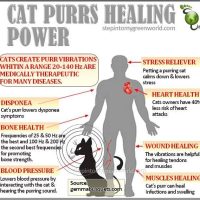Care Tips for Outdoor Cats in Winter
What extra steps can you take to keep kitties safe during the winter? Whether you want to look out for your own feline or a neighborhood cat, we’ve got a few tips specifically for the chilly weather. Watch out for antifreeze, salt, and other ice-melting substancesThough these items can work wonders for your car and driveway, they can be dangerous for kitty. For starters, keep them out of reach in your garage or outside. Secondly, always keep an eye out for antifreeze leaks from your car – and if you see any spills, quickly clean them up.Oddly enough, cat litter is actually great for absorbing the antifreeze – many people suggest letting the litter sit on the spill for 30 minutes before sweeping it into a trash can and scrubbing the area with a little laundry soap. Just stay outside to make sure cats don’t try to get into the cat litter. Also, try to find a pet-friendly substance to melt the ice in your driveway. Because cats will walk across salt and other ice melt and then likely lick their own paws, it’s important to avoid potentially toxic supplies. Safe Paw is sold at many hardware stores – e.g. Home Depot and Lowe’s – and is designed to be safer for kitties. You can also try to be diligent about cleaning kitty’s paws when he or she comes inside. Build a cold-weather cat shelter Click here to read our previous article about building a DIY cold-weather cat shelter. In addition to food and water, a warm shelter made out of a rubber storage bin is a simple and great way to help keep feral and stray cats in good health during cold temperatures. Take steps to help prevent water and wet food from freezing If you leave food and water outside for cats, there are a few things you can do to keep it from freezing (or slow down the process). Firstly, check the bowls frequently to make sure they are not frozen. Or, refill the bowls on a schedule – felines have a sharp internal clock, so they may get used to stopping by at specific times when they know the water is fresh.Secondly, use a heated water bowl or a thick and deep plastic container to hold the food or water. If you have a cold-weather shelter, put the wet food as far away from the doorway as possible. And don’t put the water in the shelter at all – if it spills, then the whole shelter will just be a frozen mess! Check Your Engine for Sleeping Cats A car engine can actually be a pretty warm place for cats to nap, so you want to make sure no felines are sleeping in there before you start the car. If your car is parked somewhere that a cat could access, try honking the horn or banging on the hood before starting the engine – the noise will likely startle the cat and get him or her out of the engine. Keep an eye on the temperature outside If your cat is both an indoor and outdoor cat, consider keeping kitty inside when the weather is really bad outside – especially when temperatures drop to very low numbers. Felines could get caught in snowstorms or catch frostbite from prolonged exposure to very cold temperatures, so it’s something to consider when winter approaches.Frostbite is most likely to happen on the nose, feet, tail, and ears. It makes the affected parts pale or a bit blue in color, and those frostbitten spots feel cooler to the touch than the...
Read MoreDIY: Assemble a Cold-Weather Cat Shelter
As the temperatures take a dive, feral and stray cats are at risk for serious health complications. As a cat lover, there are some steps you can take to protect your neighborhood feline friends. Regularly leaving out food and water goes a long way, ensuring strays stay hydrated and receive proper nutrition. Beyond providing a food source, you can keep visiting stray and feral cats protected from frigid weather. Kitties need a reliable place to take shelter, and you can provide it! There are numerous ways to do this. Below we’ve provided instructions for a super simple DIY shelter, adapted from a CSM Stray Foundation project. You can act as a guardian for neighborhood cats by providing a safe haven during the winter months. Simple DIY Winter Shelter Materials: Large Rubbermaid storage bin 8×2 foot sheet of 1-inch thick hard Styrofoam Yardstick Box cutter Insulating material (straw, shredded newspaper, etc.) Directions: 1. Create a doorway in one of the long sides of the storage bin by cutting a 6×6 inch opening. The bottom of the doorway should begin a few inches above ground to prevent potential flooding. 2. Use the box cutter (or utility knife) and yardstick to cut out a piece of Styrofoam that will cover the floor of the bin. 3. Next, cover each of the interior walls of the bin with Styrofoam, leaving a 3-inch gap between the top of the Styrofoam wall coverings and the rim of the bin. This allows space for a Styrofoam roof to be attached. 4. Trace the “doorway” outline onto the Styrofoam that’s lined with the cut-out door, then cut to create an opening of the same size in the Styrofoam. 5. Line insulating material around the bottom of the bin to keep Styrofoam wall pieces in place. 6. Create a roof by cutting out an appropriate-sized piece of Styrofoam to rest on top of the interior wall pieces. Place lid on top of roof to seal shelter. Note: Bin is light and may need to be weighed down with a piece of plywood or similar heavy material on top. If desired, you can create a flap to place over the doorway. To initially attract cats, sprinkle catnip inside the shelter. Shelter is easy to clean—just take off the lid and...
Read MoreThe healing power of a purring cat
Those crazy cat ladies might be onto something. According to today’s infographic, our feline friends provide us with more than just emotional support. House cats may actually be contributing to our physical well-being. When a cat purrs within a range of 20-140 Hertz, nearby humans may be therapeutically benefiting from these vibrations. Purring has been linked to lowering stress, decreasing symptoms of Dyspnoea, lessening the chances of having a heart attack, and even strengthening bones. Pet therapy is apparently gaining momentum in many medical communities, and according to Animal Planet’s website, there is scientific research that suggests pet owners live longer than those without pets. It seems that our own animals have the ability to relieve us of our troubles, or at least make our worries seem less important. The bond between pets and their owners may never be fully understood (cats in particular have always struck me as magical and mysterious–and now they have healing powers?!) but it’s nice to know having a furry confidant around can add years to our lives. So, if you’re trying to convince Mom and Dad to let you get a kitty, go show them this infographic and stop by your local animal shelter!...
Read MoreHow your cats behave and why
Jackson Galaxy — The Cat Daddy — of Animal Planet’s “My Cat From Hell” explains what he means when he says “Cat Mojo.”
Read MoreCat Injury – broken bones
We usually think of cats as graceful and agile animals that can make impressive jumps. However, even the best athlete can miss. Falls and collisions with cars are the most common ways a cat breaks a bone. Attacks by other animals (and sometimes humans) can also result in bone fractures. The bones most commonly broken (or fractured) are the femur, pelvis, jaw, and tail. What to Watch For The primary symptoms seen are from pain. Cats will try to hide their pain, so watch for these signs: Crying, howling, moaning, or growling, especially if touched Not walking, or not using a limb or tail Not eating or grooming Swelling or bruising at the injured area Sometimes a broken bone will poke through the skin. This is called a compound fracture. In addition, there may be other injuries associated with the traumatic event that broke the bone, such as cuts, bruises, or disorientation. Primary Cause A fracture is a crack or break in the bone caused by abnormal stress on the bone, usually from a traumatic event like a fall or being hit by a car. Immediate Care The first thing to remember is that your cat is in pain, and animals in pain can bite, no matter how gentle they are normally. The second thing to remember is that an event severe enough to fracture a bone could cause shock and other not so obvious problems, some of which may not be detectable for days. Therefore, any home treatment is just to stabilize the injury until your cat can be seen by your veterinarian. Any areas that are bleeding or where bone is sticking out should be covered with sterile gauze or a clean cloth if possible. The broken bone(s) should be disturbed as little as possible. Wrap your cat in a thick towel or put him on a rigid surface to carry him to your veterinarian. Veterinary Care Diagnosis Your veterinarian will evaluate your cat’s overall health to assure that more serious problems are under control. Once your cat is stable, multiple X-rays of the suspected fracture(s) will be taken. Treatment There are many factors that will determine how the fractures are treated. The most important are overall health, age, the bones broken, and the type of fracture that has occurred. A splint or cast may be sufficient for the lower leg, but not always.Often surgery will be needed to realign the bones and to place screws, pins (metal rods), wire, and/or metal plates to hold the pieces together. Some fractures may be so severe as to require amputation, especially if the tail is involved. Fractures of the spine and pelvis will be treated by severely restricting activity (cage rest), with or without surgery. Pain medication will also be part of the treatment plan, and in some cases, antibiotics. Other Causes Pathologic fractures are caused by anything that can weaken the bone, such as certain hormonal imbalances, bone infections, and bone cancer. Living and Management The most important, and hardest, part of home care is restricting your cat’s activity, especially jumping. Any bandaging material will need to be kept dry. If it gets wet, especially from urine, or if there is odor or evidence of chafing, you will need to have the bandages checked and probably replaced. You also need to keep your cat from chewing on the bandages. The Elizabethan collar is the most commonly used device, but new collar styles and bandages that taste bad are also becoming more available. ...
Read MoreAn Overview on Wound Treatment for Cats
Steps for Treating a Wound Cats are just as susceptible to everyday minor injuries as any other animal. Many cuts (lacerations), bruises (contusions), and scrapes (abrasions) are not life threatening and will heal with little treatment. Other wounds can be severe enough to require sutures and more intense emergency care. What to Watch For Fresh wounds will usually show some or all of the following: Bleeding Swelling Missing hair Cut, scraped or torn skin Limping Tenderness or pain If a wound is not seen when it is fresh, it can become infected. In addition to swelling and tenderness, you may observe the following: Discharge (pus) from the wound Abscesses (i.e., an accumulation of pus under the skin) and the resulting hole in the skin when the abscess break open and drain Signs of a fever (e.g., lethargy and ears that feel hot to the touch) Primary Cause Wounds can come from bumping or hitting hard or sharp objects, avoiding cars, attacks from animals, and other dangers. Immediate Care What you can do at home is ultimately up to your cat. Sometimes the only thing you can do is wrap your cat in a towel or put him in a carrier and take him straight to your veterinarian. There are, however, a few things you can do if your cat will let you, especially if it may be a while before you can get to your veterinarian. If there is bleeding, apply direct pressure to the wound. The wound should be covered with sterile gauze or a clean cloth, and then pressure applied. It may take 5 to 10 minutes for bleeding to stop. Once it does, tape the gauze in place; removing it may remove the clot and bleeding will restart. Check for other wounds. If there is no bleeding and the cut (laceration) or scrape (abrasion) appears minor, try cleaning the wound. Use an antiseptic solution or plain water and gauze or a cloth (not cotton) to gently clean around the wound, and a syringe or similar device to flush the solution over the surface of the wound. Antiseptic solutions are made by diluting concentrated solutions bought at the store that contain either povidone iodine or chlorhexidine diacetate as the active ingredient. Do not use alcohol or hydrogen peroxide on the wounds, as these will actually damage the tissue. Povidone should be diluted to the color of weak tea; chlorhexidine should be diluted to pale blue. If the laceration is long or deep, or if it is a puncture wound, you can clean around the edges as already described, but do not flush the wound itself. Let the veterinarian do that. Once you have done all that you can, take your cat to your veterinarian. Veterinary Care Diagnosis Your veterinarian will carefully examine your cat and evaluate all wounds that are found. Your cat will also be evaluated for indications of other problems. The cat’s hair will need to be shaved off for proper evaluation. Some wounds may require X-rays. Sedation may also be necessary to accomplish the examination. Treatment The basic goals of treatment are to prevent infection and speed healing. Different types of wounds require different methods of accomplishing these goals. Most of the time your cat will require sedation or anesthesia to treat the wounds safely and without causing more pain. Small scrapes and cuts often require nothing more than a thorough cleaning and maybe a little skin glue to hold the edges of the cut together. Long and/or deep cuts require careful cleaning...
Read More





